Discover and read the best of Twitter Threads about #dishist
Most recents (15)
This year I'm making a commitment to present in virtual conferences alone. I'm going to shift my dues paying memberships to spaces that value disabled and otherwise high risk academics. And I'm going to shift my intellectual labor to these spaces alone. 1/15
Do I have the power to do this? Not really. Will anyone see this as a threat? Probably not, I'm not a big name. But I have a modicum if power and privilege, and I'm going to weaponized that power to build change. 2/15
No matter what, we have the power to shift academia by simply holding steadfast to collective demands for safety, access, and equity. We can build something sustainable by just being brave and standing resolute. 3/15
This week in my #DisHist class we talked about the ugly laws and Susan Schweik's excellent book. For those who don't know ugly laws were passed in major cities across the 1800s and 1900s. These laws essentially prevented disabled people from existing freely in public. 1/5
In reality they targeted all minority groups: immigrants, Black and Indigenous people, homeless people, and disabled people. They basically ushered in slum clearing projects and they went hand in hand with institutionalization (in jails, workhouses, almshouses, etc). 2/5
Every single class students comment that time has passed but so little has changed. Disabled people still can't safely exist in public. We still can't rely on public spaces to be safe or accessible for us. 3/5
Swallowing down angry tears after a student admitted that they're scared to come to campus. They have multiple vulnerable family members, all of whom are sheltering in place and have been this whole time. 1/4
They told me they couldn't handle it if they were the one to bring home a disease that could kill their family members. I just sat with them in defeat. My classes are hybrid and accessible, but I can't change campus policies or overarching insistence on in-person classes. 2/4
I'm so weary of being scared every day of teaching #DisHist and trying to build solidarity with students who are scared every day. Telling disabled students/staff/faculty they need to just leave higher ed is inexcusable. 3/4
Hi everyone - as a fellow at Kean University I need to give a fellows talk on my research. For COVID safety (and because I want you all to be able to be there) I've asked that the event be hosted virtually. So I'm very happy to invite you to my research talk! (1/4)
On Monday, February 7th from 3:30 - 4:30 PM EST I will be talking about my dissertation work and my manuscript research. I'll be talking about #DisHist, #HistMed, and #VastEarlyAmerica in early nationalist Philadelphia. (2/4)
If you want to learn about things about disability in early America, or welfare infrastructure in early American cities, or medico-welfare reform across the early 1800s, please save this Zoom meeting link (3/4): kean-edu.zoom.us/j/99822294403
I'm teaching a #dishist course this term. I'm anxious and scared about teaching for all the pandemic reasons (and desperately hoping we make the switch to remote through spring break). Nevertheless, this is the course I needed when I was dx with a disability at 19. 1/4
Almost a decade later I now get to introduce students to disability history. To help disabled students reclaim their past. To teach others how to be informed allies. To talk about the precedence of ableist policies. And hopefully to dream of a less ableist future. 2/4
Things are not good at all. But I'm finally becoming the person I needed in undergrad. I'm not a great teacher, I'm still really struggling to adjust to teaching in a high stress situation, but I'm here and I'm trying. 3/4
I've been studying chronic pain for going on 15 years now. I have some thoughts on this, many of which I've articulated elsewhere and for some time now:
1/
The Quiet Scientific Revolution That May Solve Chronic Pain nytimes.com/2021/11/09/wel…
1/
The Quiet Scientific Revolution That May Solve Chronic Pain nytimes.com/2021/11/09/wel…
The headline and the article fundamentally misconstrues the primary causes of the devastating and highly inequitable undertreatment of pain in the US (and globally, but that's another conversation).
2/
2/
The primary causes for our failures in treating people in pain humanely and effectively are not connected to lack of technical, clinical, or scientific knowledge.
3/
3/
Speaking as someone who studies anxieties about malingering and their connections to health, disability, & social policy, the framing of this NYT article is enormously problematic.
1/
The Man Who Filed More Than 180 Disability Lawsuits nytimes.com/2021/07/21/mag…
1/
The Man Who Filed More Than 180 Disability Lawsuits nytimes.com/2021/07/21/mag…
The article is well-written, but it leaves out an enormous amount of context. Most importantly, ADA and disability law violations are de rigeur. They are common, frequent, every day occurrences. Ask people w/ mobility impairments how airlines handle their wheelchairs.
2/
2/
Ask hearing-impaired or Deaf people about the availability of SL-fluent interpreters in public accommodations. And on and on and on. It's endless.
As w/ most forms of civil rights and antidiscrimination laws in the US, the rules are observed in the breach.
3/
As w/ most forms of civil rights and antidiscrimination laws in the US, the rules are observed in the breach.
3/
I was diagnosed with #EhlersDanlos and #ArnoldChiari in undergrad. The eds dx came the winter of sophomore year, and the Chiari dx the spring of senior year. I would have given anything to have disabled mentors through those years. 1/11
I care about disability representation in higher ed because I had to find my way into claiming a disabled identity. Alone. Because I didn't know what to read or who to reach out to or what to ask for. Representation leads to belonging. 2/11
In undergrad I had wonderful profs, some of whom privately disclosed medical issues, but none of whom were vocal and public about identifying as disabled. I didn't have a professor with mobility devices like I had. 3/11
I'm tired of hearing "well people are uncomfortable with disability bc they're not exposed to disabled ppl." If disability matters then invest in us. Make it a point to hire us. Make it a point to give us platforms. 1/7
There are so many of us wedged out of the academy from undergrad to grad school and beyond. So many of us who are highly qualified to teach in disability studies related fields. So many of us that WOULD expose students to disabled scholars/mentors/advocates. 2/7
Fight to add Disability Studies departments, minors, and majors at your university. It infuriates me that roughly 20 percent of undergrads are disabled and they don't get to learn about their culture, history, or people. If I had taken #DisHist and #DisabilityStudies courses 3/7
Thread:
1/n
Today is #NationalDogDay!
Time to re-examine the roles dogs have played in #DisHist!
For centuries, artists have shown dogs accompanying blind subjects, performers & beggars across the world, suggesting that dogs lived/worked alongside disabled handlers.


1/n
Today is #NationalDogDay!
Time to re-examine the roles dogs have played in #DisHist!
For centuries, artists have shown dogs accompanying blind subjects, performers & beggars across the world, suggesting that dogs lived/worked alongside disabled handlers.

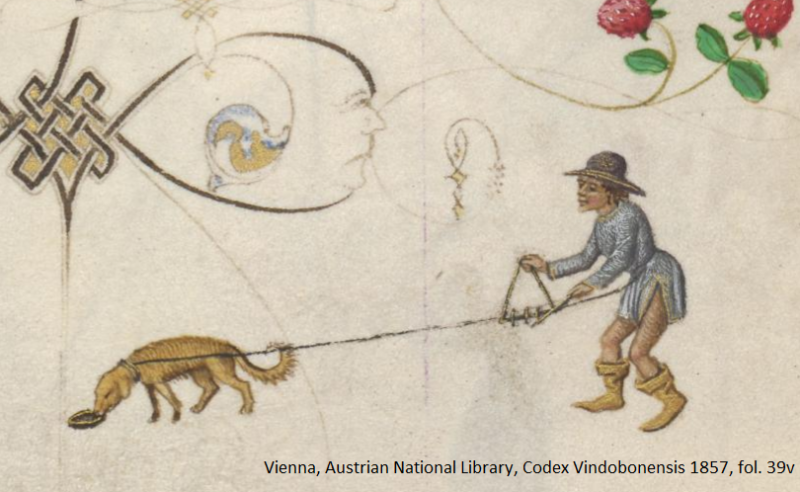

2/n
Medieval European texts show figures that might possibly be blind holding a staff & the lead of a dog. As per @NinonDubourg, dogs were not considered reliable or safe in theory, but they were likely used as companions and fellow performers while begging.
#DisHist #envhist

Medieval European texts show figures that might possibly be blind holding a staff & the lead of a dog. As per @NinonDubourg, dogs were not considered reliable or safe in theory, but they were likely used as companions and fellow performers while begging.
#DisHist #envhist
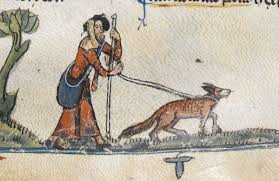

3/n
For more on #DisHist and good dogs in medieval illustrations, you can read @drkmurch’s blog here: kristamurchison.com/medieval-guide…
And @JudeSeal’s @ExploreWellcome piece here: wellcomecollection.org/articles/XszQJ…
#NationalDogDay #envhist #animalhistories
For more on #DisHist and good dogs in medieval illustrations, you can read @drkmurch’s blog here: kristamurchison.com/medieval-guide…
And @JudeSeal’s @ExploreWellcome piece here: wellcomecollection.org/articles/XszQJ…
#NationalDogDay #envhist #animalhistories
Thread:
The best kind of #DisHist is that of the everyday.
In 2014, @bbcouch researched the story of Duncan McKenzie and Nesta Holgate, a deaf British couple whose 1940 wedding featured in a British Pathé video.
1/n
The best kind of #DisHist is that of the everyday.
In 2014, @bbcouch researched the story of Duncan McKenzie and Nesta Holgate, a deaf British couple whose 1940 wedding featured in a British Pathé video.
1/n
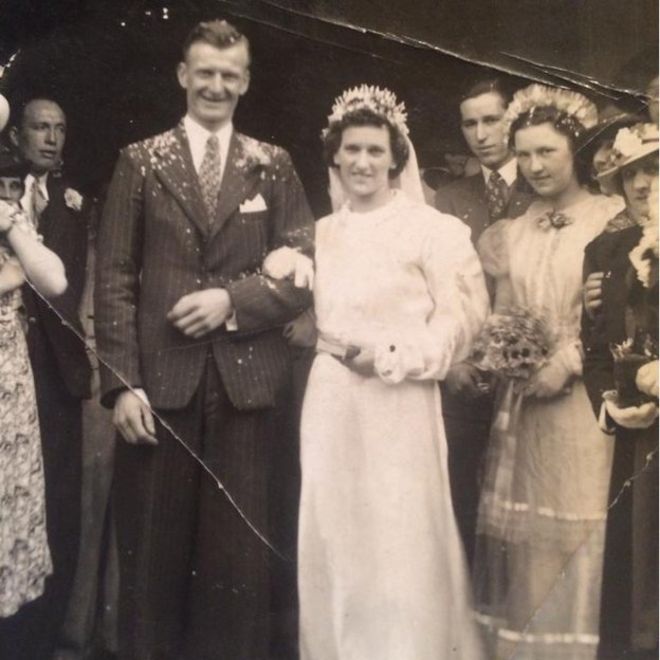
2/n
'Everyone at the wedding is both deaf and dumb and they all converse in sign language.'
This is the video of the wedding, shot in 1940 and showing several shots of the wedding party, happy, excited and signing.
#DisHist #DeafHistory
britishpathe.com/video/deaf-and…
'Everyone at the wedding is both deaf and dumb and they all converse in sign language.'
This is the video of the wedding, shot in 1940 and showing several shots of the wedding party, happy, excited and signing.
#DisHist #DeafHistory
britishpathe.com/video/deaf-and…
3/n
The wedding took place at Beverley Minster, which was supposed to be the resting place of St. John, who was supposed to heal the sick and to give the power of speech back to the nonverbal and hearing to the deaf.
#DisHist #DeafHistory

The wedding took place at Beverley Minster, which was supposed to be the resting place of St. John, who was supposed to heal the sick and to give the power of speech back to the nonverbal and hearing to the deaf.
#DisHist #DeafHistory
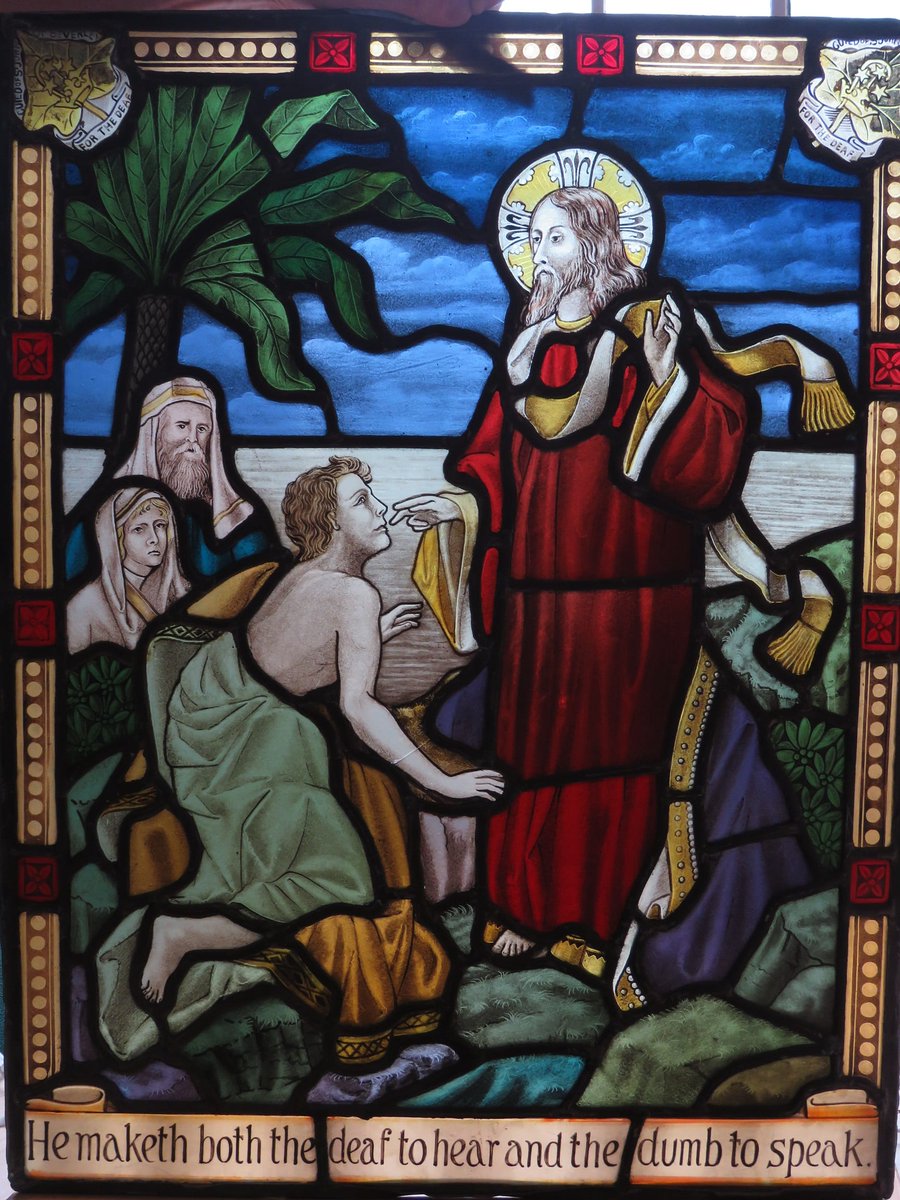

Thread:
1.
What does disability offer as a category of historical analysis? Why does #DisHist matter?
Here is an eg:
Born in Sardinia, Antonio Gramsci (1891–
1937) lived with physical disability, possibly due to Pott's disease (image not of him).../
1.
What does disability offer as a category of historical analysis? Why does #DisHist matter?
Here is an eg:
Born in Sardinia, Antonio Gramsci (1891–
1937) lived with physical disability, possibly due to Pott's disease (image not of him).../
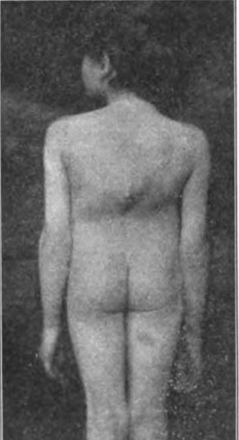
2.
His mother held to the idea that he was disabled after a fall down a flight of stairs which she blamed on a servant. The young Gramsci lived with chronic pain, and his condition may have impacted his growth as well.
#DisHist #DisabilityHistory #histmed
His mother held to the idea that he was disabled after a fall down a flight of stairs which she blamed on a servant. The young Gramsci lived with chronic pain, and his condition may have impacted his growth as well.
#DisHist #DisabilityHistory #histmed
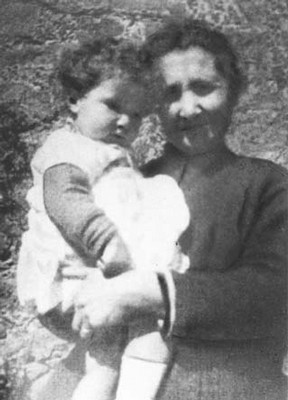
3.
Gramsci's own writings describe how he was called a gobbo (hunchback) by those around him & described how his condition made him feel like an "intruder" in his family.../
#DisHist #histchild #histmed
Gramsci's own writings describe how he was called a gobbo (hunchback) by those around him & described how his condition made him feel like an "intruder" in his family.../
#DisHist #histchild #histmed
Thread:
1.
‘Public schools were closed to me because of my wheelchair, and special schools were closed to me because I was black”
The Mar 1970 edition of Performance mag. profiled the polio survivor and disabled artist & teacher Juanita Cotton.
#DisHist #DisabilityTooWhite
1.
‘Public schools were closed to me because of my wheelchair, and special schools were closed to me because I was black”
The Mar 1970 edition of Performance mag. profiled the polio survivor and disabled artist & teacher Juanita Cotton.
#DisHist #DisabilityTooWhite

2.
Born in Oklahoma, Juanita was educated at home & graduated high school at 20. Her counselor refused to support her studying art in college. He “tried to find a reason why I couldn’t go to college” & sent her to a psychiatrist for wanting to study art. She persisted.
#DisHist
Born in Oklahoma, Juanita was educated at home & graduated high school at 20. Her counselor refused to support her studying art in college. He “tried to find a reason why I couldn’t go to college” & sent her to a psychiatrist for wanting to study art. She persisted.
#DisHist
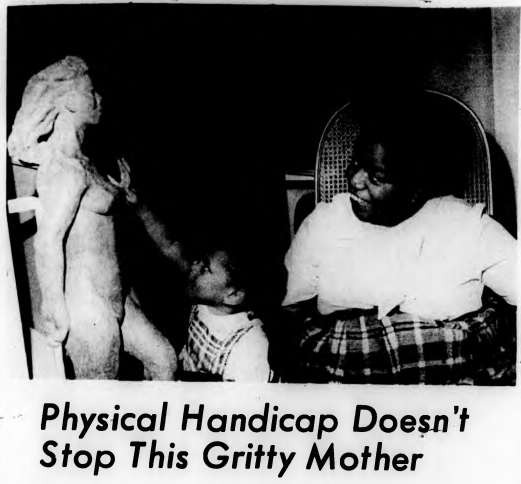
3.
She was the 1st black woman & the 1st disabled woman ever to study in the art Department @UofOklahoma, where she was 'largely ignored' by other students & confronted all the problems of wheelchair users including falling down a large flight of steps on campus.
#DisHist
She was the 1st black woman & the 1st disabled woman ever to study in the art Department @UofOklahoma, where she was 'largely ignored' by other students & confronted all the problems of wheelchair users including falling down a large flight of steps on campus.
#DisHist
1.
Medieval Japanese guilds (za) offered spaces for belonging & institutional support for the blind. Todo-za claimed links to ancient emperors, aristocratic families, & incarnations of deities for authority/legitimacy. Not all of the blind enrolled in the toda-za/
#DisHist
Medieval Japanese guilds (za) offered spaces for belonging & institutional support for the blind. Todo-za claimed links to ancient emperors, aristocratic families, & incarnations of deities for authority/legitimacy. Not all of the blind enrolled in the toda-za/
#DisHist

2.
When a blind person wished to enter the todo-za, they usually became the apprentice of a local member. The acolyte then shaved their head & was known as the shoshin (beginner). They then paid their dues to the todo-za and received a certificate of membership & a rank/
#DisHist
When a blind person wished to enter the todo-za, they usually became the apprentice of a local member. The acolyte then shaved their head & was known as the shoshin (beginner). They then paid their dues to the todo-za and received a certificate of membership & a rank/
#DisHist
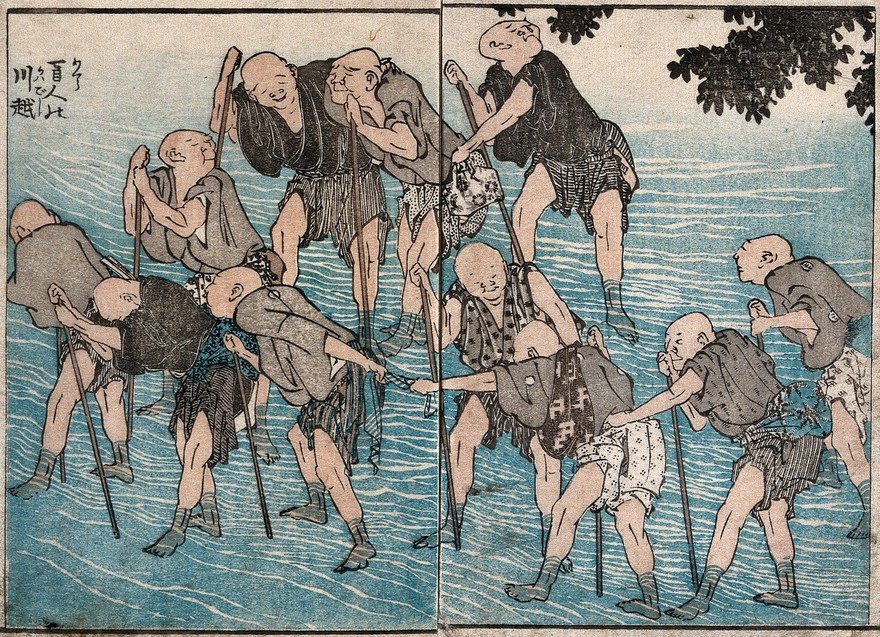
3.
These guilds provided support and education to the blind, including training in stringed instruments
& storytelling, which were occupations commonly regarded as suitable professions for the blind/
#DisHist
These guilds provided support and education to the blind, including training in stringed instruments
& storytelling, which were occupations commonly regarded as suitable professions for the blind/
#DisHist
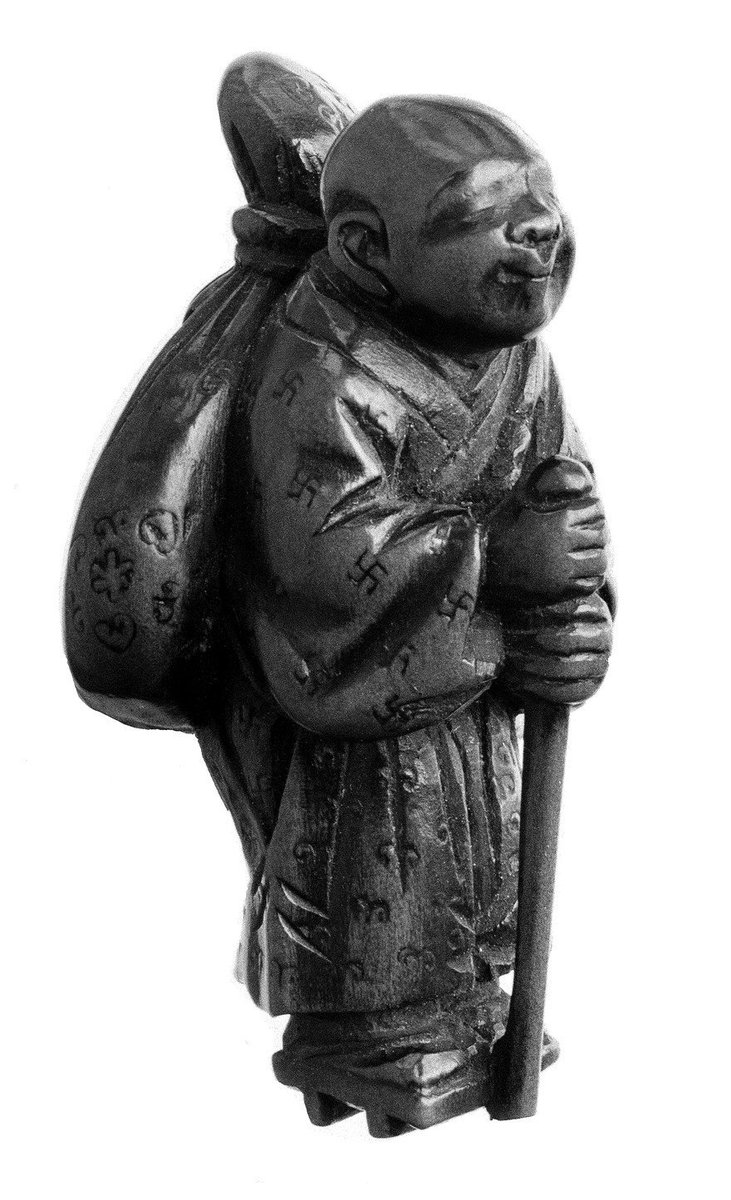
Thread:
Today is #NationalDogDay! Lets examine what roles our 4-legged friends have played in #DisHist!
Artistic representations of dogs accompanying #blind singers, beggars etc from across the world suggests that they have often worked and lived alongside #disabled handlers..1/

Today is #NationalDogDay! Lets examine what roles our 4-legged friends have played in #DisHist!
Artistic representations of dogs accompanying #blind singers, beggars etc from across the world suggests that they have often worked and lived alongside #disabled handlers..1/


In this #earlymodern illustration of the Dance of Death, Death cuts the rope that links the blind man and his dog: “I cut you off from your guide.”
The blind man responds, saying, “I cannot take a step without my dog (hund).”
#DisHist #NationalDogDay..2/
The blind man responds, saying, “I cannot take a step without my dog (hund).”
#DisHist #NationalDogDay..2/

For more on #DisHist and good doggos in medieval illustrations, read @drkmurch's blog here:
kristamurchison.com/medieval-guide…
...3/
kristamurchison.com/medieval-guide…
...3/
